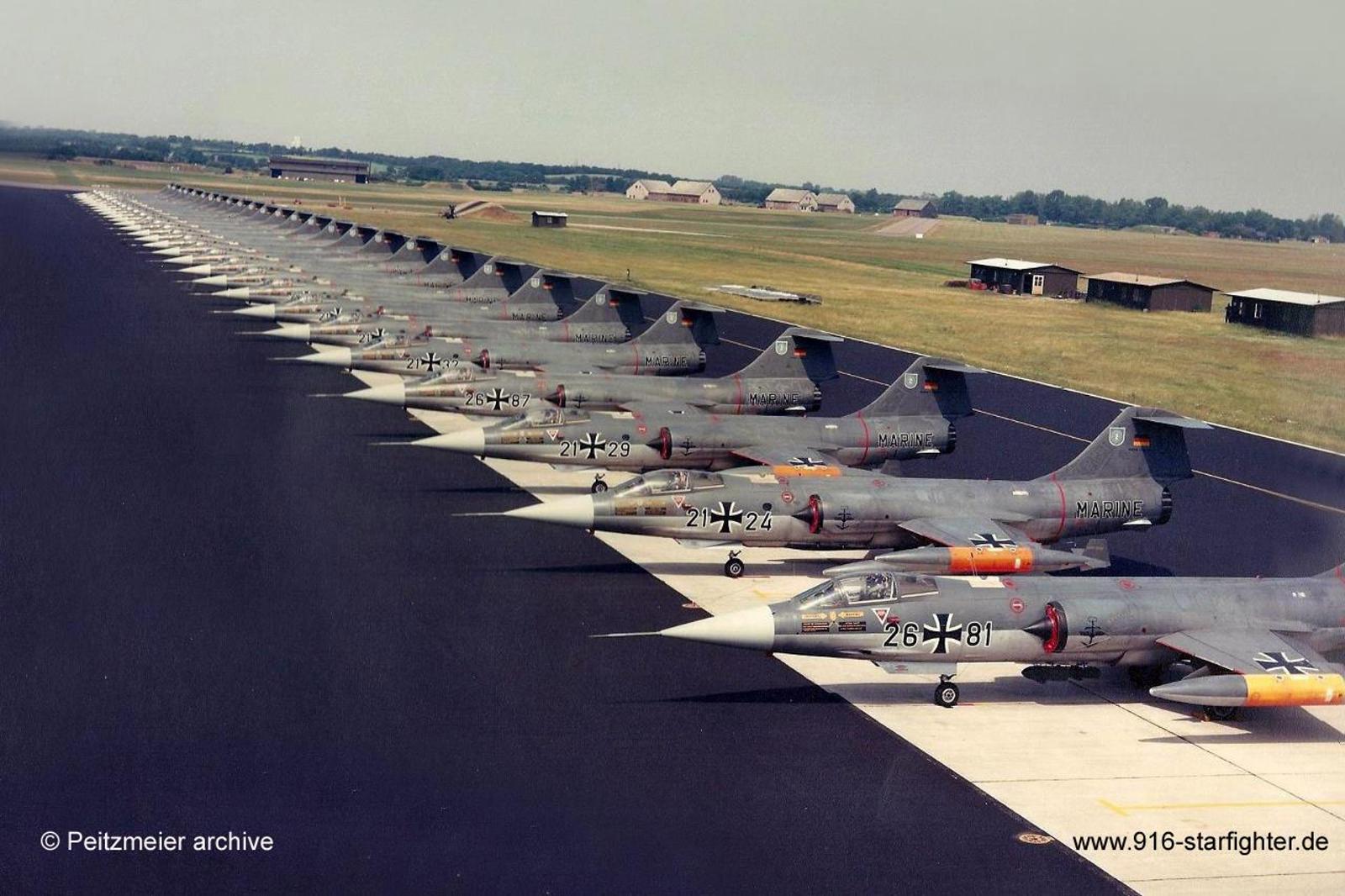

Line-up of Marinefliegergeschwader 2 at Eggebek AB in summer 1986 Marinefliegergeschwader 1 1st october 1963 meant the beginning of the supersonic era for MFG 1, as the wing began transitioning to the new german standard weapons system Lockheed F-104G Starfighter. The Starfighter was never the aircraft the Navy had wanted, but political pressure was to big. Navy's choice would have been a low-level, two-seated fighter bomber like the Blackburn Buccaneer. Transition to the new type took almost two years, with the last Sea Hawk leaving Jagel on 30th june 1965. The Starfighters career was the longest of any aircraft in MFG 1's history. Replacement arrived with the Panavia Tornado in 1982, when MFG 1 was selected as the first German Wing (Bundeswehr) to receive the new hi-tech aircraft. Marinefliegergeschwader 2 Eggebek was put into service as a naval airbase by Viceadmiral Zenker on March 12, 1965. A week later, the wings first RF-104G Starfighter landed at Eggebek AB. Two years later, on April 1,1967, MFG 2 again established a second squadron. 1st squadron was equipped with RF-104G maritime reconaissance variants, while 2nd squadron utilized the F-104G Fighter-bomber variant of the new german standard weaponssystem Starfighter. When sister wing MFG 1 began transitioning to the Tornado in 1981, MFG 2 was assigned a third squadron, comprising F-104G Starfighter and pilots from 2./MFG 1. This squadron only lasted a mere year, as 3./MFG 2 was re-incorporated into MFG 1 as early as September 1982. MFG 2 transfered to Tornado four years later in 1986. copyright © Peitzmeier archive

